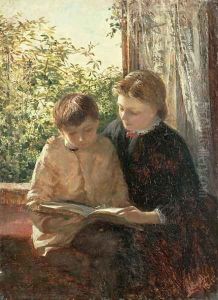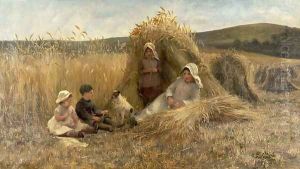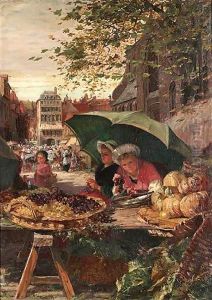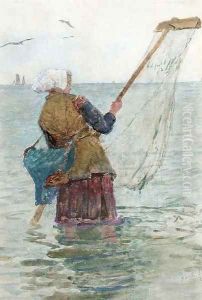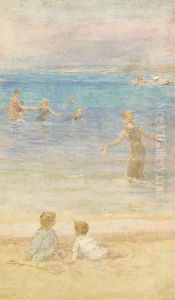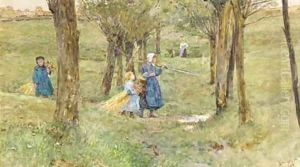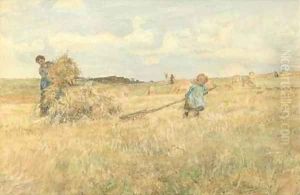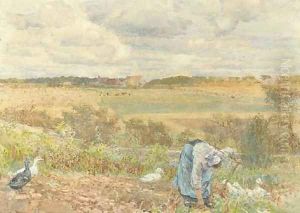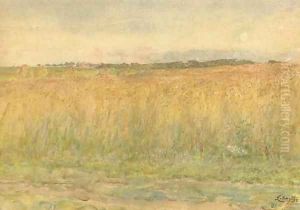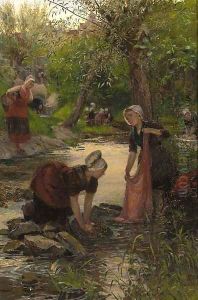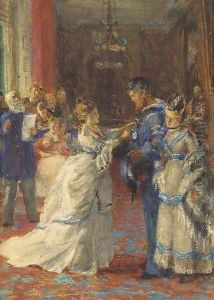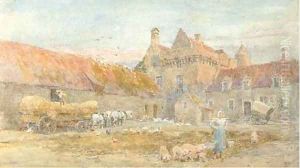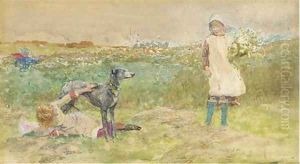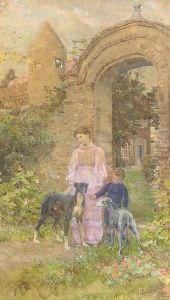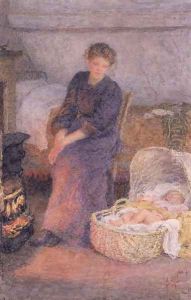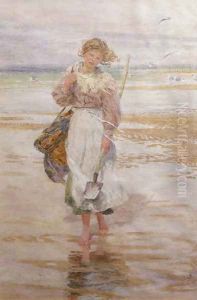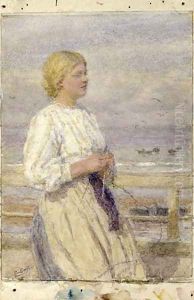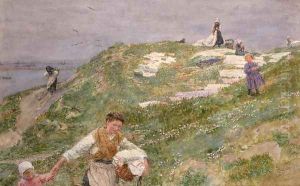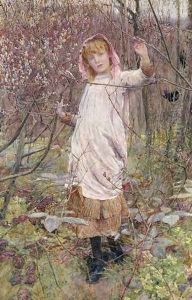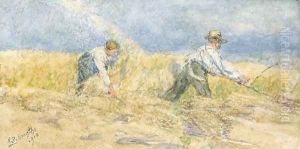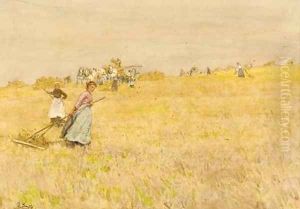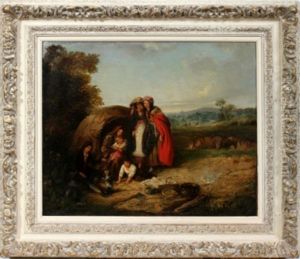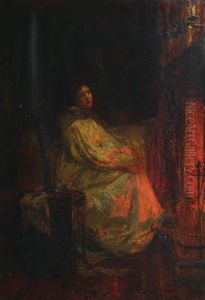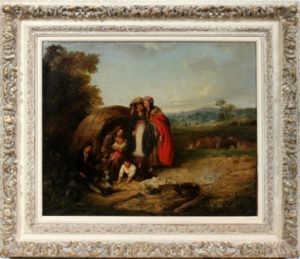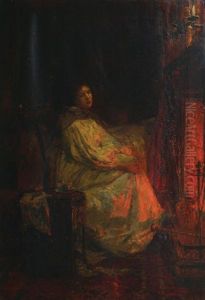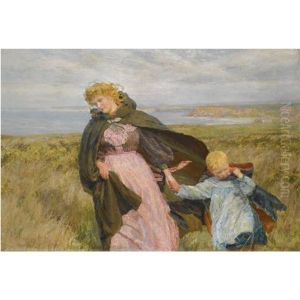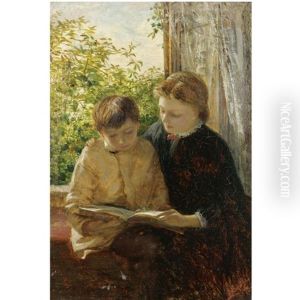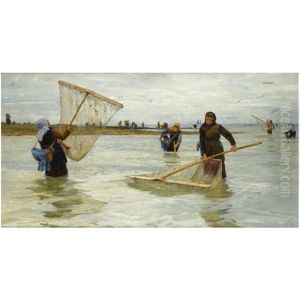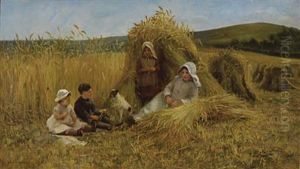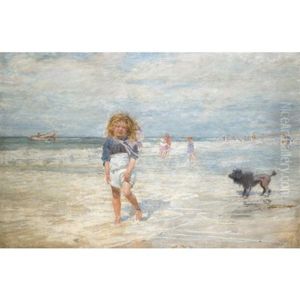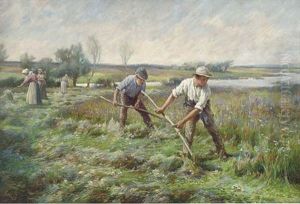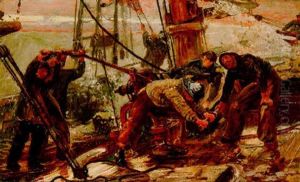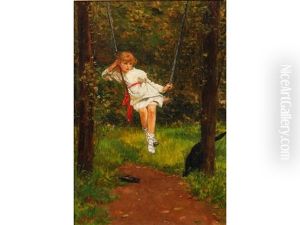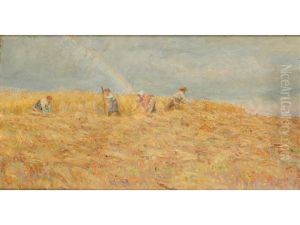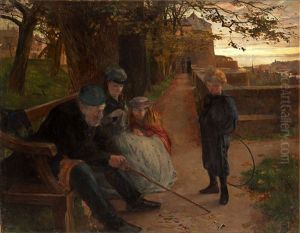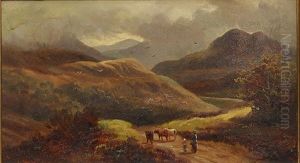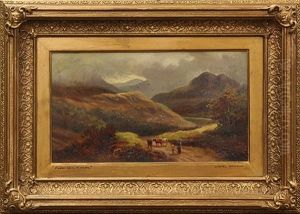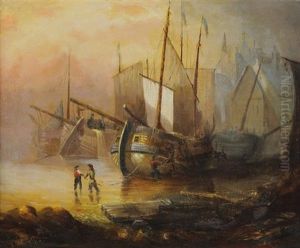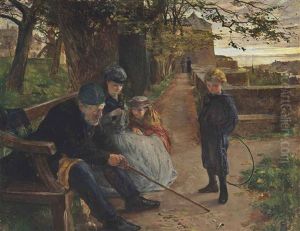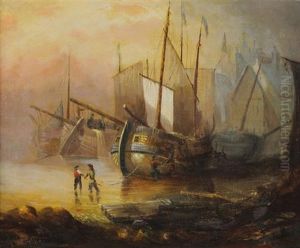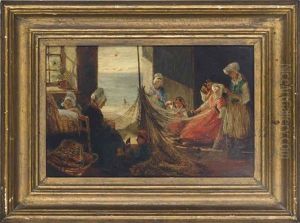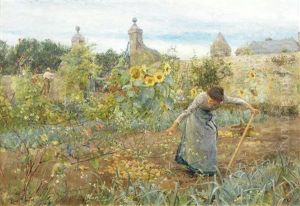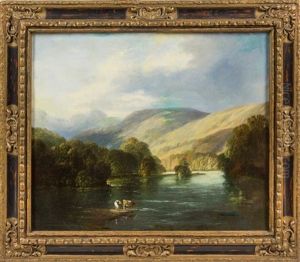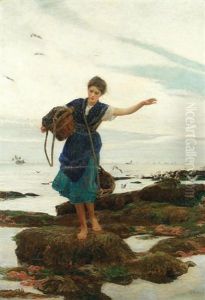Lionel Percy Smythe Paintings
Lionel Percy Smythe was a British artist known for his landscape paintings and watercolors. Born on the 4th of September 1839 in London, Smythe exhibited a keen interest in art from an early age. He was initially educated at home, where he began to develop his artistic skills. His family moved to France when he was a child, and this exposure to French culture and art had a significant influence on his later work.
Smythe returned to England to study at the Heatherley School of Fine Art in London and later at the Royal Academy Schools. His early work was characterized by detailed landscape paintings, often focusing on rural scenes. He was influenced by the French Barbizon school, as well as by the British landscape tradition.
Smythe's work gained recognition, and he became an associate of the Royal Watercolour Society in 1879 and a full member in 1892. He was also elected an associate of the Royal Academy in 1898 and became a Royal Academician in 1911. His paintings were exhibited widely, including at the Royal Academy in London and in Paris at the Salon.
Throughout his career, Smythe was also noted for his marine scenes and his ability to capture the changing effects of light and atmosphere. His travels around the coast of Britain, as well as trips to France and Venice, provided ample subject matter for his paintings.
Lionel Percy Smythe was also a teacher, sharing his knowledge and techniques with a new generation of artists. He had a strong influence on the development of British watercolor painting at the turn of the century.
Smythe continued to paint until his death in 1918. His legacy is that of a versatile and skilled landscape painter who managed to bridge the gap between the British and French painting traditions of the late 19th and early 20th centuries. Today, his works can be found in various art collections, including the Victoria and Albert Museum in London and the Walker Art Gallery in Liverpool.
